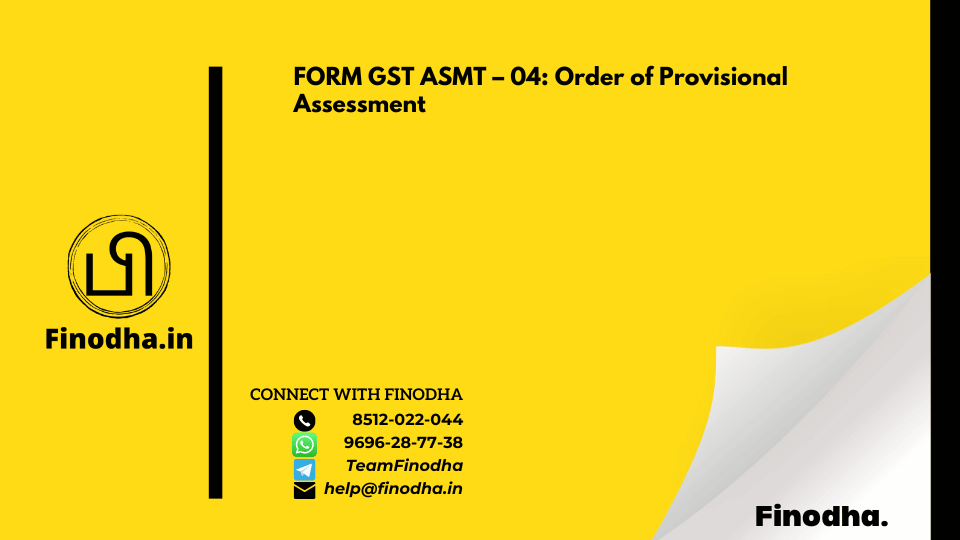Important Keyword: Business and Profession Income, Income Heads, ITR Form, ITR-3.
Table of Contents
What is ITR-3 form?
The ITR-3 form is designed for individuals and Hindu Undivided Families (HUFs) who earn income from a business or profession. This form is also appropriate for those who receive income from a partnership firm or Limited Liability Partnership (LLP). Simply put, you need to file ITR 3 if your income falls under the category of “Profit or Gain of Business or Profession.” Additionally, it is used when a tax audit is required.
Up until FY 2018-19 (AY 2019-20), it wasn’t mandatory to file an Income Tax Return if your total income was below the basic exemption limit. However, the 2019 Budget introduced the seventh proviso to Section 139(1). According to this provision, taxpayers must file an ITR even if their total income does not exceed the basic exemption limit if they have engaged in certain high-value transactions. These transactions include:
- Depositing more than INR 1 crore in a current account
- Incurring foreign travel expenses exceeding INR 2 lakh
- Incurring electricity expenses over INR 1 lakh
Who Can File ITR-3?
The ITR-3 form is meant for individuals and Hindu Undivided Families (HUFs) who have income from various sources, including:
- Partners in a Partnership Firm or LLP:
- If you are a partner in a partnership firm or an LLP, you need to file ITR 3.
- Income from Multiple Sources:
- Individuals earning income from salary, house property, capital gains, and other sources, along with “Profits or Gains of Business or Profession,” must file ITR 3.
- Non-Eligibility for Presumptive Taxation:
- Those not eligible for the Presumptive Taxation Scheme under Section 44AD, 44ADA, or 44AE should use ITR 3.
Who Cannot File ITR-3?
The ITR-3 form cannot be used by certain entities, including:
- Separate Legal Entities:
- Partnership firms, LLPs, companies, and charitable trusts cannot file ITR-3. These entities have to use other specified forms suitable for their structure and income types.
Structure of ITR Form 3
| Part/ Schedule | Heading | Fields |
|---|---|---|
| PART A- GENERAL | Personal Information | Name, Address, Date of Birth, PAN, contact details, etc. |
| Filing Status | Employer Category, Tax status, Residential status, Return filed under the section, etc. | |
| PART B-TI | Computation of total income | |
| PART B-TTI | Computation of tax liability on total income | The Bank Account details, Verification and TRP details (if any) are to be provided here |
| Schedule IT | Details of Advance Tax and Self Assessment Tax Payments | BSR code, Date of Deposit, Chalan number, Tax Paid |
| Schedule TDS | TDS1: Details of Tax Deducted at Source from SALARY | TAN of Employer, Employer Name, Tax Deducted, etc. |
| Schedule TDS | TDS2: Details of Tax Deducted at sources from Income other than Salary (As per FORM 16A) | TAN, Name of Deductor, Year of Deduction, Tax deducted, etc. |
| Schedule TDS | TDS3: Details of tax deducted at source on sale of immovable property u/s 194IA (Form 26QB) | PAN & Name of the Buyer, TDS-certificated Number, TDS Amount, etc. |
| Schedule TCS | Details of Tax Collected at Source (TCS) [As per Form 27D issued by the collector] | TDS/TCS Number of the Collector, Name of the Collector, Tax Collected, Amount being Claimed |
| Schedule S | Details of Income From Salary | Name and PAN of the Employer, Address of the Employer, Salary, Perquisites, Allowance, etc. |
| Schedule HP | Details of Income from House Property | Details of House Property, Name and PAN of the Co-owners and Tenants, Details of Rent Income, Interest payable on Borrowed Capital, etc. |
| Schedule IF | Information regarding partnership firm in which you are a partner | Name and PAN of the Firm, Whether the firm is liable to audit?, Percentage share in profit, Amount of share in the profit, Capital balance as on 31st March in the firm. |
| Schedule BP | Details of Income from Firm of which you are a partner | Salary, bonus, commission or remuneration, Interest received from the firm on capital, expenses, Net Income |
| Schedule CG | Capital Gains | Details about the Short term and Long term capital gains, Sales consideration, Cost of Acquisition, Deductions under section 54, 54B, 54EC, 54F, 54GB, etc. |
| Schedule OS | Income from Other Sources | Dividend, Interest, Rental Income from machinery, Winnings from lotteries, Crossword puzzles, Races, Games, etc. |
| Schedule CYLA | Details of income after setoff of current year losses | |
| Schedule BFLA | Details of income after Set off of Brought Forward Losses of earlier years | |
| Schedule CFL | Details of Losses to be carried forward to the future years | |
| Schedule VI-A | Deductions under Chapter VI-A | Deductions under section 80C, 80CCC, 80CCG, 80D, 80DDB, 80E, 80G, 80TTA etc. |
| 80G | Details of donations | Name of Donee, Address, city or district, state code, PAN of Donee, amount, etc. |
| Schedule SPI | The income of specified persons (spouse, minor child, etc.) included in the income of the assessee (income of the minor child, in excess of Rs. 1500 per child, to be included) | Name and PAN of person, relationship, nature of income, amount |
| Schedule SI | Income chargeable to income tax at special rates | Description of special rate income, Special rate, Income, Taxable income after adjusting min. chargeable to tax, Tax thereon |
| Schedule EI | Details of Exempt Income (Income not to be included in Total Income) | Interest income, Dividend, Agricultural income, etc. |
| Schedule FSI | Details of Income from outside India and tax relief | Country, Head of income, Income from outside India, Tax paid outside India, Tax payable in India, Relevant article of DTAA if relief is claimed u/s 90 or 90A. |
| Schedule TR | Summary of tax relief claimed for taxes paid outside India | Details of tax relief claimed |
| Schedule 5A | Information regarding the appointment of income between spouses governed by Portuguese Civil Code | Name and PAN of the spouse, Income received under different heads, Amount appointed in the hands of the spouse, TDS details, etc. |
| Schedule FA | Details of Foreign Assets and Income from any source outside India | Details of foreign bank accounts, financial interest in any entities, Immovable properties, Other Capital Assets, etc. |
| Schedule AL | Asset and Liability at the end of the year (other than those included in PART A – BS of the return of the firm in which you are a partner) [Applicable in a case where total income exceeds Rs. 25 Lakh] | Particulars of Assets and Liability |
Filing your income tax return (ITR) is a crucial annual task, and understanding the process can sometimes feel overwhelming. To simplify things, let’s break down the essentials step by step.
Part A: General
When filling out your ITR-3 form, attention to detail is key. Ensure every section is completed as indicated. If a particular schedule or item doesn’t apply to you, mark it with “NA” or “Nil.” For negative figures or losses, precede the figure with a hyphen (-). All figures should be rounded off to the nearest rupee, but when it comes to total income, round off to the nearest multiple of ten rupees.
Sequence for Filling Parts and Schedules
Follow this sequence for a smooth filing process:
- Part A- General
- Schedules
- Part B-TI and Part B-TTI
- Verification
- Details relating to TRP (Tax Return Preparer) and counter signature of TRP if applicable
Documents Needed to File ITR-3 Form
Gather these essential documents before starting:
- PAN (Permanent Account Number)
- Bank Account Details
- TDS Certificates
- Counterfoils of Taxes Paid
- Details of Original Return if Filing Revised Return
- Details of Notice if Filing in Response to a Notice
Additionally, prepare documents based on your income type:
- Salary Income: Form-16 or Salary Slips from your employer, and Pension Statement/Passbook.
- House/Property Income: Property address, co-owner details (if applicable), loan interest certificates (if applicable), rent agreement (for let-out property).
- Other Sources: Savings/current account statements, interest certificates, dividend warrants, rent agreements (for let-out machinery), and details of any other income receipts.
- Capital Gains: Documents such as sales and purchase deeds, contract notes, cost of purchase, improvement costs, and details of expenses incurred on the transfer of capital assets.
How to File ITR-3?
You have two options: physical submission or electronic filing. Since the financial year 2013-14, electronic filing has been compulsory for taxpayers with incomes exceeding INR 5 lakhs.
For Physical Submission:
- Submit the ITR-3 in paper form or a bar-coded return form.
- The department will provide you with an acknowledgment stamped with the submission details.
For Online/Electronic Submission:
- Submit the ITR-3 online after digitally signing it, or submit it online and send the signed verification (ITR-V) to the Central Processing Center, Bangalore, within 120 days.
- Alternatively, use the e-verification option to avoid sending the ITR-V and streamline the process.
Sample ITR 3 Form AY 2021-22

Major Changes in ITR 2 for AY 2021-22
Taxpayers now have the option to choose between the old and new tax regimes. Additionally, dividend income must be added with quarterly breakdowns for accurate calculation of interest under Section 234C.
Filing your ITR shouldn’t be daunting. With this simplified guide, you’re equipped to navigate the process smoothly.
Read More: AY 2021-22 ITR 4 for Presumptive Taxation Scheme
Web Stories: AY 2021-22 ITR 4 for Presumptive Taxation Scheme
Official Income Tax Return filing website: https://incometaxindia.gov.in/





0 Comments